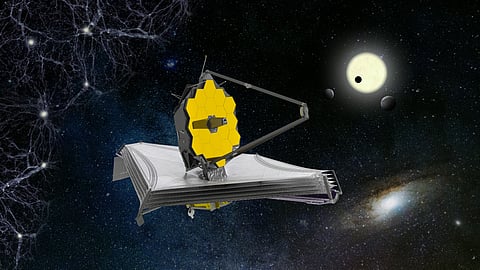

When NASA launched the James Webb Space Telescope (JWST) in 2021, its success depended on one crucial task — keeping its vision sharp from more than a million kilometres away.
A team of Australian scientists has now managed to refine Webb’s clarity using innovative software corrections that recover lost detail, thus enhancing its ability to detect faint celestial objects.
Researchers from the University of Sydney focused on Webb’s Aperture Masking Interferometer (AMI), a small metal plate inside one of its cameras that detects optical distortions. Led by PhD student Louis Desdoigts, the team found that bright pixels were “leaking” into nearby dark ones, Moneycontrol reports.
This led to blurred images, and limited Webb’s ability to distinguish dim planets from bright stars nearby.
To fix this, the scientists built a detailed model of AMI’s optical behaviour and used machine learning to reverse the leakage. Their open-source correction software successfully restored the AMI’s full resolution power.
Once applied, Webb produced clearer images of the star HD 206893, revealing a faint planet and a reddish-brown dwarf companion previously unseen.
Encouraged by this achievement, co-student Max Charles extended the technique to more complex targets. Using the improved system, they imaged features of Jupiter’s volcanic moon Io, monitored eruptions, sharpened views of a black-hole jet in galaxy NGC 1068, and revealed dust structures around star WR 137.
Since Webb operates about 1.5 million kilometres from Earth, making physical repairs impossible, such software-based calibration is a necessary intervention.
